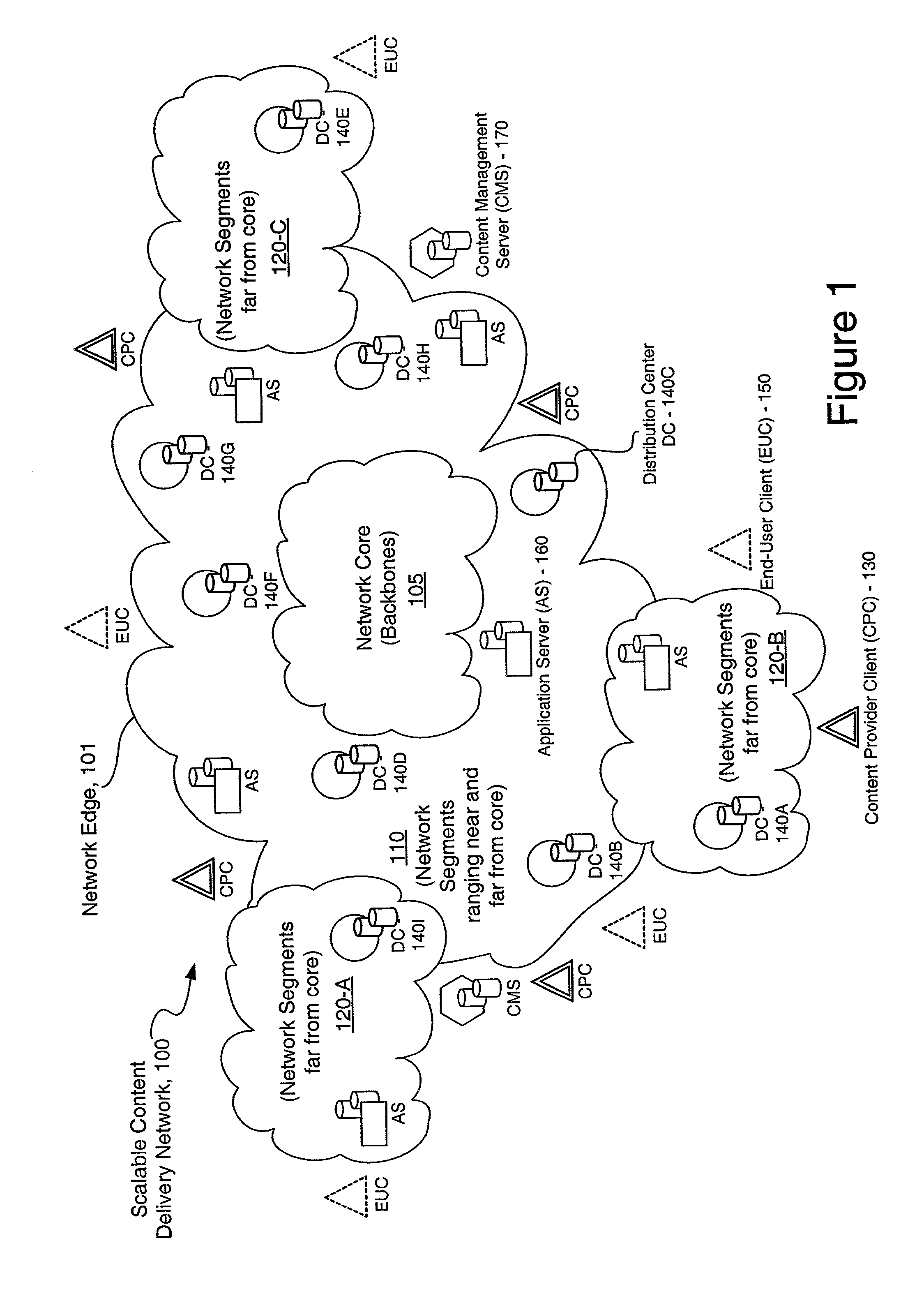Method and system for managing distributed content and related metadata
a technology for managing distributed content and related metadata, applied in the field of storage and distribution of content over, can solve the problems of requiring an inordinate affecting the quality of distributed content, and consuming a large amount of storage space, so as to reduce the amount of storage space and reduce the storage requirements
- Summary
- Abstract
- Description
- Claims
- Application Information
AI Technical Summary
Benefits of technology
Problems solved by technology
Method used
Image
Examples
Embodiment Construction
[0058]The following description is for the best modes presently contemplated for practicing the invention. This description is not to be taken in a limiting sense, but is made merely for the purpose of describing the general principles of the invention. The scope of the invention should be ascertained with reference to the claims.
[0059]The present invention is related to a method and system for storing and distributing content. In particular, the invention provides a highly efficient architecture and technique for processing, storing and serving content to a user for education, entertainment, business, or any other purpose. A method and system according to an embodiment of the present invention creates an advanced read-write-able integrated network file system in which directory presentation and data store are separated. The method and system includes division, distribution, and re-assembling of files that does not delay the presentation of the content to the user, but also does not...
PUM
 Login to View More
Login to View More Abstract
Description
Claims
Application Information
 Login to View More
Login to View More - R&D
- Intellectual Property
- Life Sciences
- Materials
- Tech Scout
- Unparalleled Data Quality
- Higher Quality Content
- 60% Fewer Hallucinations
Browse by: Latest US Patents, China's latest patents, Technical Efficacy Thesaurus, Application Domain, Technology Topic, Popular Technical Reports.
© 2025 PatSnap. All rights reserved.Legal|Privacy policy|Modern Slavery Act Transparency Statement|Sitemap|About US| Contact US: help@patsnap.com



